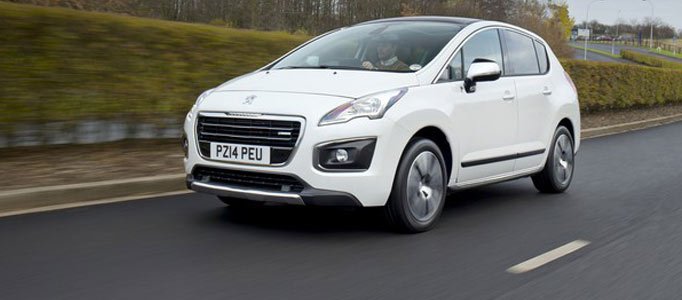There used to be a time when there were strict boundaries between sedans, hatchbacks, 4x4s and other types of cars, it was easy for the car salesmen and easy for the car buyers. However, recently we’ve seen some car body types being pushed aside, while others morphing into something entirely new.
The Crossover shake-up
The biggest shaker of the industry in the recent years has been the crossover. You can’t really classify it and vehicle type labels just don’t stick. Although the initial meaning of a crossover is a small size urban SUV, it can really mean anything these days: a cross between a hatchback and MPV, even a cross between a coupe and an SUV.
One of the first coupe/SUV crossovers was the Heuliez Intruder – a controversial French car that appeared in 1997. Although it was appreciated by auto enthusiasts, it wasn’t a complete commercial success. Audi has recently gone down a very similar route with their CrossLane coupe tipped for a 2015 debut and already eagerly awaited by the German brand aficionados.
The small SUV Market is growing
We have seen a healthy sales growth in crossovers, especially the small ones. This source highlighted that urban motorists are ready to pay a 3,000 Euro premium for a chance to have a better seating position. The same source, which was published a year ago, cites industry analysts who’ve predicted that the European small crossover market will sell 550,000 vehicles in 2016.
This is quite an increase when you consider the sales figures of the last couple of years, there were 261,000 small crossovers sold in Europe in 2012. A figure which increased 81% in 2013 with 471,000 crossovers sold across Europe. It’s hard to see the segment maintaining the same level of growth but even if it expands 50% each year, it will have doubled the market estimates by 2016.
Early in 2013 we wrote about the stunning success of crossovers and even tried to come up with a new name for them: Crossovers at the Crossroads.
Exciting Times Ahead for Car Designers?
A couple of decades ago, I imagine that life was relatively easy for car designers. The marketing department did market research and told the design department exactly what they needed to create for the next generation lineup: sedans, hatchbacks, estates. Simple!
Now with the abolishment of guidelines as to what the different body styles should look like, the car designers are expected to erase the boundary lines between various established styles of design.
Take the old classification of the car body styling: one-box, two-box or three-box. The Vauxhall Meriva would be a one-box while the Mercedes S Class is a typical three-box design. What’s a Jaguar XF? Is its rear department protruding far enough to classify it as a sedan? Or is it a notchback?
In some of the older vehicle design textbooks you will read about the A, B and C pillars and the ideal distance between them. This is all pretty much irrelevant as some designers choose to obliterate the B-pillars altogether.
Is Pillarless the New Buzzword?
This is happening thanks to new possibilities in material design. We can now build roofs and doors that are strong enough to still warrant a 5-star safety rating for a pillarless car. With all that in mind, the history of the pillarless car gives us another reason to smile about. One of the first pillarless cars was the Facel Vega Excellence – a luxury French limo presented in 1956.
It was surely a beautiful car, however, its pillarless design was a true disaster. The doors kept popping open whenever you took a sharper turn. This was a major safety issue and a special lock had to be installed on the inside. Another famous attempt to serialise the pillarless design was the 1959 Chevrolet Bel Air. Although it was a beautiful car, it was considered unsafe even by the virtually non-existent safety standards of the 1950s.
Because our crossovers become smaller and smaller, I suppose they will eventually evolve into pillarless bodies as well – how can the designers maintain the down-sizing trend without compromising ergonomics of the car?
The 1959 Chevrolet Bel Air was recently crash-tested against a much lighter 2009 Chevrolet Malibu and the results were rather conclusive: The old car failed miserably, mainly due to the body design.
Although there have been several more or less successful attempts at making a truly pillarless car, it was the little-known Hobbycar Passport that revolutionised the concept in 1994. The French manufacturer began using a new generation of materials that allowed to remove the B pillar on an MPV despite the large area of the flanks. The novel luxury all-wheel drive MPV with a 6-speed gearbox didn’t unfortunately make it to the conveyor and only a handful of cars were produced. Almost 20 years later, Ford picked up the idea and introduced the Ford B-Max. The reason why they have been able to open the gap so wide and still keep the car safe is the same as with the Hobbycar – materials! The only difference is that during the last 20 years, those materials have become much cheaper, hence justifiable for mass production. Back in the Spring I wrote about the advancements to car materials here, looking at how they can make your car lighter an more fuel efficient: Weight Watchers – Top 5 ultralight car technologies. If you are looking for a new car, it doesn’t matter if you are not sure of the naming of the vehicle type, use our Vehicle database and use our array of search options including vehicle design, price, age,doors, fuel, make and model etc. Search for cars for new and used cars for sale here





 Facebook
Facebook Twitter
Twitter Instagram
Instagram LinkedIn
LinkedIn Youtube
Youtube